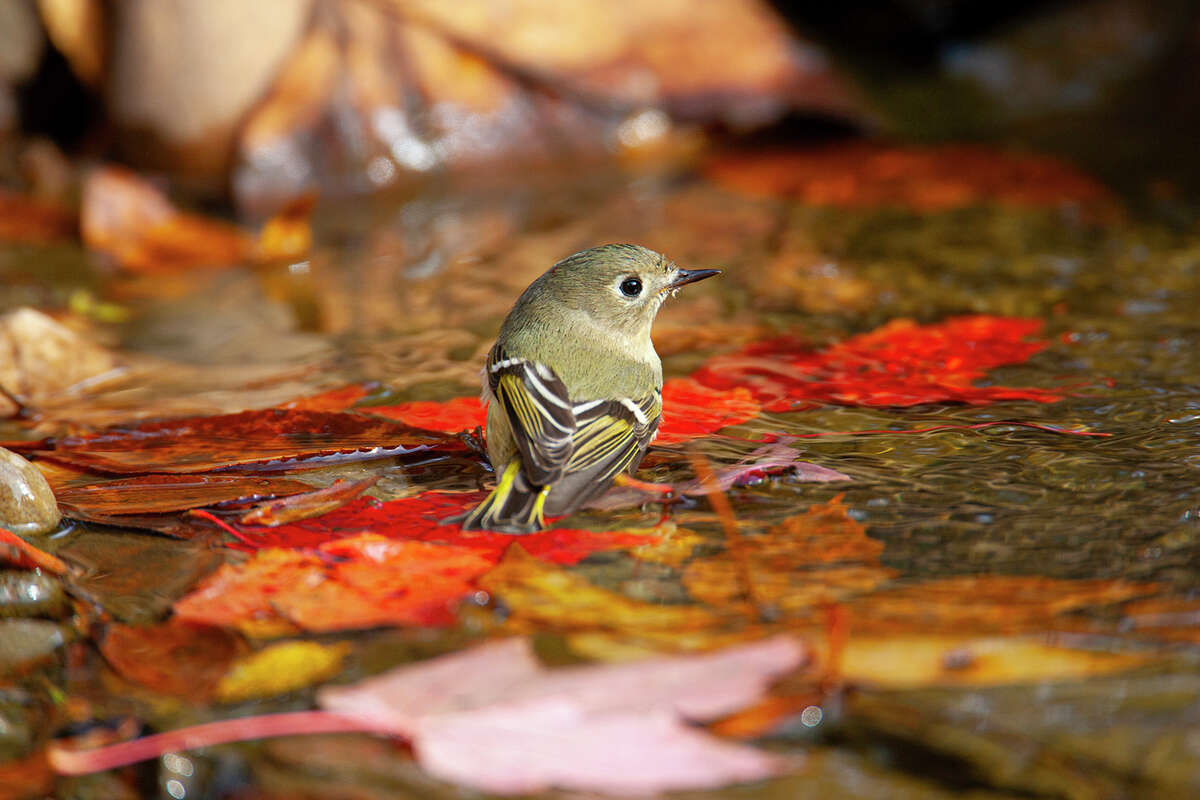Ruby-crowned kinglets are the tiny, frenetic visitors in Houston backyards
Gary Clark, Correspondent
Nov. 11, 2023
 1of3Ruby-crowned kinglets spend the winter in our area backyards and parks. 1of3Ruby-crowned kinglets spend the winter in our area backyards and parks.
Kathy Adams Clark/KAC Productions

Delightful ruby-crowned kinglets are migrating from far northern latitudes to spend the winter in our backyards and local parks.
Aptly named for its tuft of ruby-red head feathers, the bird is among the smallest of North American songbirds — even smaller than our resident Carolina wren. But the kinglet is as hyperactive as a wren, leading John James Audubon to name it “ruby-crowned wren.”
What’s impressive is how such a tiny bird arrives here from breeding grounds in the spruce, pine and birch forests of eastern Canada, New England and northern Minnesota.
Once you see the petite bird scurrying frenetically around bushes and trees to glean insects from twigs and branches, you’ll wonder if it ever stops to rest. You’ll also notice the bird’s odd behavior of constantly twitching its wing in a jerking motion when scuttling around twigs and branches.
Fidgety wings are not a spasmodic abnormality but rather the bird’s way of spooking up insects. The rapid wing movements also clue us to the tiny bird’s identity. Otherwise, a lusterless olive-green winter plumage would barely alert us to the bird as it hurries through trees and bushes.
And don’t expect to identify the bird by its tuft of red crown feathers. Only the male has the red tufts, erecting them only when sensing predatory threats or the encroachment of other birds on its feeding spot.
However, you usually can get the male bird to raise its crown feathers by pursing your lips and making repeated kissing sounds. Just don’t overdo it. Otherwise, the bird will waste valuable feeding time by reacting to you as a presumed predator.
You can also slowly approach a tree or bush where the bird feeds to get a closer look. Binoculars would give you the best views of the bird’s feather details.
What you’ll notice is a white circle around the eye called an eye ring. A gap at the top and bottom of the eye ring makes it look like a pair of eyeglasses with cracks in the frame. Also, look for an angled white bar running down the side of each wing and bordered by a conspicuous black bar.
Among the more enjoyable aspects of the bird are its double-noted calls that sound like "chip-it, chip-it, chip-it," as though telling us to chip wood for a fireplace.
Ruby-crowned kinglets
- Ruby-crowned kinglets are adaptable winter residents that occupy varied habitats, including suburban backyards, urban neighborhoods and parks.
- Found in trees, bushes, shrubs and fields with trees and hedgerows.
- Diet includes insects, seeds and wild fruits.
- While ruby-crowned kinglets are common winter residents in our area, their closely related golden-crowned kinglets are uncommon winter residents.
- To tell the difference, notice that golden-crowned kinglets have a pronounced white eyebrow and a yellowish crown bordered in black.
- Both birds represent the only species of kinglets in North America and are in the same family as European kinglets, like the goldcrest and common firecrest.
houstonchronicle.com |







